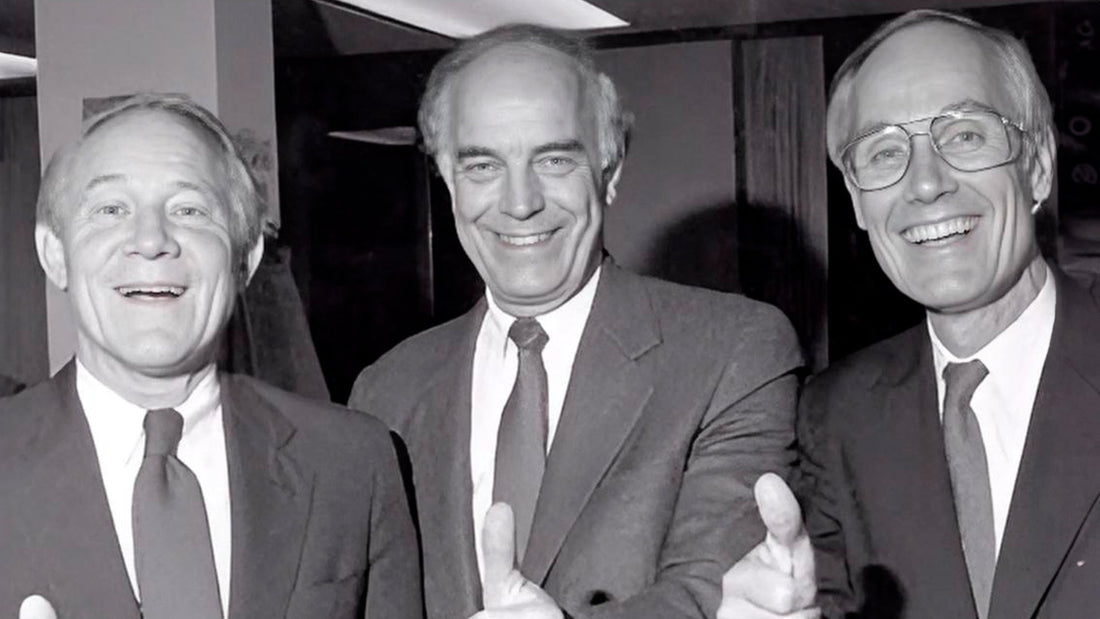
How it All Began, the History of Pickleball
Share
"The future belongs to those who believe in the beauty of their dreams." - Eleanor Roosevelt
Pickleball, a sport that has captured the hearts of millions, has an intriguing history that reflects innovation, family fun, and the spirit of competition. What started as a simple backyard game has grown into a global phenomenon, played by people of all ages and skill levels. Let’s take a journey through the story of pickleball, exploring its humble beginnings and its rise to fame.
The Birth of Pickleball: A Game of Innovation and Fun
The story of pickleball begins in the summer of 1965 on Bainbridge Island, Washington. It was here that three dads—Joel Pritchard, Bill Bell, and Barney McCallum—created the game as a way to entertain their bored children. After a day of golf, Pritchard and Bell returned home to find their families restless and looking for something to do. They decided to set up a badminton court but quickly realized they didn’t have the proper equipment.
In a burst of creativity, they improvised. They lowered the net, grabbed some ping-pong paddles, and used a perforated plastic ball, commonly known as a Wiffle ball. What started as a casual, makeshift game quickly became a hit among family and friends.
How Did It Get Its Name?
The origin of the name "pickleball" has been a subject of debate and legend. According to one version, the game was named after the Pritchards' family dog, Pickles, a cocker spaniel who would often chase after the ball and run off with it. However, Joan Pritchard, wife of Joel, has gone on record in contradicting the probable myth of the canine and claimed she named the sport herself after the term "pickle boat," a reference to the last boat to return with its catch in rowing competitions. Just like the "pickle boat," the game is a mix of different sports including badminton, tennis, and table tennis.
The Growth and Formalization of the Sport
As the game gained popularity among neighbors and friends, Pritchard, Bell, and McCallum began to develop and formalize the rules. They designed paddles specifically for the game, which were initially made out of plywood. The original rules, which have remained largely unchanged, were established to make the game accessible and fun for all ages.
In 1972, the first permanent pickleball court was built in Joel Pritchard’s backyard. By the mid-1970s, pickleball was being played in community centers, parks, and even on a converted pickleball court at a summer camp in the Seattle area. The game’s simplicity and inclusiveness led to its rapid spread across the United States.
The Formation of the USA Pickleball Association (USAPA)
In 1984, the USA Pickleball Association (USAPA) was established to promote the growth of the sport and to maintain standardized rules. The USAPA began organizing tournaments, including the first national tournament in 2009, which attracted hundreds of players from across the country.
The formation of the USAPA marked a significant milestone in the evolution of pickleball, transforming it from a casual backyard game into a recognized competitive sport. The association continues to play a crucial role in the sport's development, organizing events, providing resources for players, and promoting pickleball globally.
Pickleball Goes Global
While pickleball started as a uniquely American pastime, its appeal quickly spread beyond the United States. Today, pickleball is played in over 70 countries, with a growing number of international tournaments and organizations dedicated to the sport. The International Federation of Pickleball (IFP) was founded in 2010 to support the global growth of the game, further solidifying pickleball’s place on the world stage.
The Modern Pickleball Explosion
In recent years, pickleball has experienced an unprecedented surge in popularity. The sport’s unique blend of competitiveness and social interaction has attracted a diverse range of players, from young children to retirees. It’s not uncommon to see multi-generational families playing together, or to find pickleball courts packed with enthusiastic players at local parks and recreation centers.
Pickleball’s popularity has also been fueled by its accessibility. The game’s simple rules and low barrier to entry make it easy for beginners to pick up, while its strategic depth keeps more experienced players engaged.
Game Point
From its humble beginnings on Bainbridge Island to its status as a global sport, pickleball’s journey is a testament to creativity, community, and the joy of play. Whether you’re a seasoned player or just picking up a paddle for the first time, you’re part of a vibrant and growing community that shares a love for this unique and exciting game.
As pickleball continues to grow, one thing remains certain—the spirit of innovation and fun that sparked the game in 1965 will continue to inspire players for generations to come.
See you on the courts!



